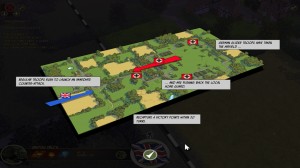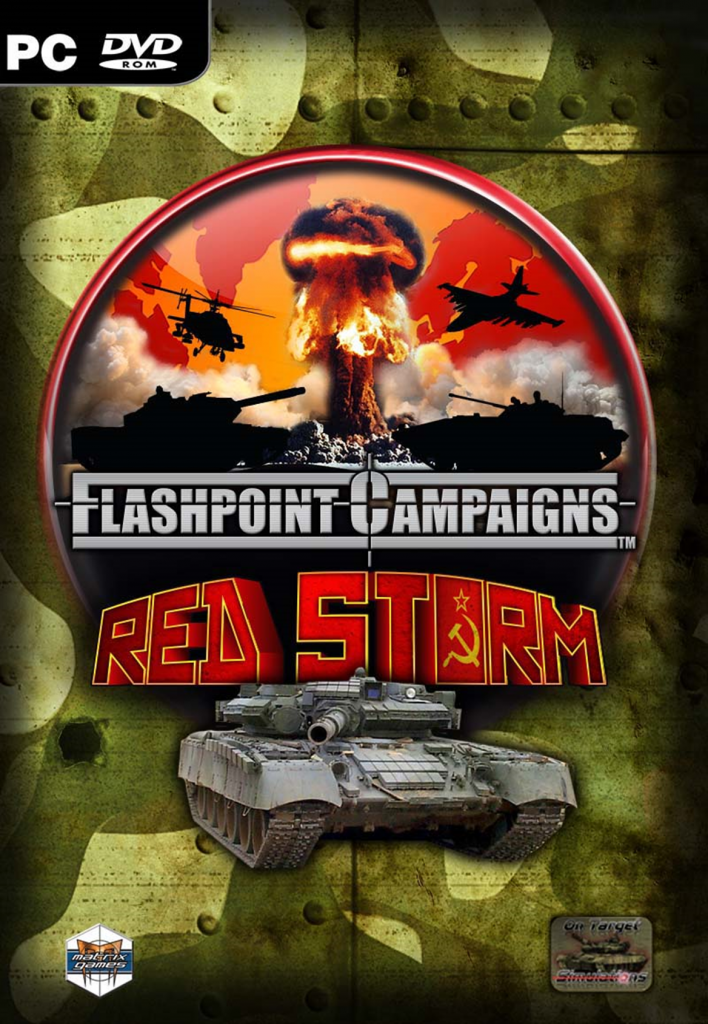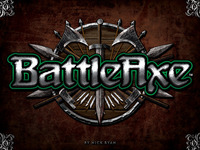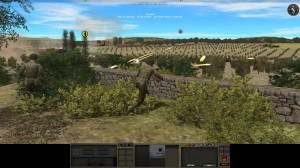Monthly Archives: September 2013
Battle Academy – Operation Sealion Expansion PC Game Review
Developer: Matrix/Slitherine
Author: Boggit
click images to enlarge
In September 1940, the UK was bracing itself against the prospect of invasion from Nazi Germany. Fortunately, it was called off, largely due to the failure of the Luftwaffe to achieve its goal of air superiority during the Battle of Britain. Battle Academy – Operation Sealion gives us Matrix/Slitherine’s take on what sort of actions might have been fought had Operation Sealion been given the go ahead.

Sitrep, Sir! Jerry’s got the airfield, and we’ve got to get it back. You have regulars, and “Dad’s Army”. Easy, eh?
Battle Academy is a tactical level, turn-based, fast play type wargame. The map is a grid of squares, with each square – if unit ranges are anything to go by – representing some 100 metres across. That at least is what I concluded, as it seemed obvious. I’ve since learned from Jim Zabek that when he wrote the core game review for the Wargamer, Slitherine told him that in fact the ranges were not linear. For some curious design reason each square has a logarithmic variation… Sealion is an expansion to the core game, so this logic likely applies here too. Units are portrayed as single vehicles, guns, with infantry in units of five men, and support weapons like LMG’s and mortars, typically two. There are no specific unit organisations, but in terms of the game scale, I found it easy to rationalise each unit as a representative infantry platoon, or support/tank section.
Gameplay is flexible, with units able to move and fire, in whatever order the player likes. A player can tweak their starting force by spending a limited supply of “force requisition points”, which has the effect of adding variation to the stock scenarios. The rules are simple, yet effective, providing a fun game with a modicum of realism. Off map assets, from artillery to airstrikes are represented, as is unit training, replacements, fresh supplies etc. Vital to game play are the spotting rules, and ambushes from cover represent a real threat. Most of the challenge of the game is in the scenario design rather than the AI. Whilst the AI is not overly challenging – even on the hardest level – the majority of scenarios in Battle Academy – as well as many user made ones – have nasty surprises to trap the unwary, often making good use of the spotting rules.
The GrogHeads Interview: Jim Snyder & Rob Crandall of Flashpoint Campaigns: Red Storm
 Grogheads interviews the twin geniuses (geniui?) behind the new Flashpoint Campaigns: Red Storm.
Grogheads interviews the twin geniuses (geniui?) behind the new Flashpoint Campaigns: Red Storm.
GH: Since the release of Flashpoint Germany it’s been eight years. For wargamers who have been dying to get their hands on the sequel, what took so long?
Rob Crandall: There is researching the game, designing the game, coding the game, testing the game and then documenting the game. Then you decide the original concept wasn’t that great after all and you repeat the process. Keep repeating until you run out of patience and/or money. Such is the carefree life of a game developer! The costs are all upfront and the payoffs are speculative and far away so it is a real test of commitment to see it through to the very end. Worse, although many parts of the work are fun, many are no fun at all and this can really bite. It is easy to zip through the fun parts but it takes discipline to do the rest when you know it will take months and months to do so. Mercifully, I had some outstanding help and the parts that were not so fun for me were picked up by partners who could do them.
I don’t have any direct evidence but I have often thought that for every ten wargames that get talked about only one gets started. For every ten that get started maybe only one gets finished. It is just that hard.
FPRS has almost 200 design documents supporting it, I have 3,500 emails sitting in Outlook regarding it since April 2007 and there are 10,500 forum posts in the Matrix private development forums. At least 100 testers must have helped me out over the years by now. Managing all that takes time too!
GH: Flashpoint Germany used tiles for movement. Flashpoint Campaigns: Red Storm uses hexes. Why the change?
Rob Crandall: I completely rewrote the square tile system so that each tile was broken down into a 4 x 4 grid of cells. Each cell had its own graphic and was rated for all the different terrain factors. The 16 averaged together represented the tile as a whole. It was awesome and very inventive, if I say so myself, but it was still squares and was too different from everything else. Converting the underlying code to hexes took something like a weekend and I have never regretted it. The result was I had to throw away my internal map editor and go to the existing system where we paint a map in a paint program and then scan it for values based on color IDs. That is a little more cumbersome but I loved the look and also loved that it became a chore I could delegate to people with greater graphic talents than I.
Jim Snyder: The graphics fell to me and I’m not really that good compared to a real graphics artist, but what I did does work. Plus folks will be able to mod their own stuff too.
GARPA 28 – GrogHeads Advanced Research on Projects Advisory
GARPA #28, Grogheads Staff
Fall is the best time of year…this is not even debatable, primarily because the heat of summer has been broken and the weather is cooler. But there is so much more that fall has to offer! Like fear. Fear brought to you by darkening days, the harvest possibly coming up short and the impending onset of winter…even if we don’t farm, there’s a natural connection to autumn that brings both excitement and a niggling sense of unease. All of this culminates in Halloween, The World’s Best Holiday.
You probably think we are going to bring you a series of planned board and PC games that intend to scare the crap out players. But would we be the GARPA guys if we were so obvious? Maybe. But that’s not what we’re doing in this installment…plenty of time for scares in the next few weeks. For now, enjoy the seasonally appropriate impending doom evident in the following planned projects!
Board Games
$3,135 pledged of $110,000 goal, funding ends Wednesday, October 23
HTML: http://www.kickstarter.com/projects/nickryan/battleaxe?ref=category
If you are 35 or older, you may remember an awesome game from the early 1980s called Crossbows & Catapults in which players literally hurled miniature projectiles at each other’s medieval strongholds in hopes of capturing their enemy’s keep. It was a violent but awesomely fun, basic game. BattleAxe appears to be in a similar vein, but hopes to be more advanced.
BattleAxe is set during the Dark Ages (I don’t care what people are calling it these days, they will always be the Dark Ages to me) and, like Crossbows & Catapults, players will assemble and command armies, build a keep, and attempt to kill the enemy king. Think chess but in three dimensions, using armored spearmen, axemen, swordsmen, and cavalry in your army and towers, walls, trenches, and fire for defense. An oversized battlefield map and custom dice are also included. The game takes a realistic angle and makes a point in not including fantasy elements of any kind…this is a game of Dark Age combat and tactics.
Nick Ryan, the developer of BattleAxe, assures potential players that the game itself is already 95% done and has been in play testing for two years, with “only funding” required at this point. That’s a big missing link, but if the game plays well tactically and strategically as promised, it will be worth investing in. Let’s hope BattleAxe can capture some of the magic that Crossbows & Catapults had for us older guys.
 Pre-Order: Reluctant Enemies (MMP)
Pre-Order: Reluctant Enemies (MMP)
766 of 640 orders needed, Pre-order price of $39.00
Reluctant Enemies is designed as a ‘gateway’ game into the OCS series, but it also covers the rarely-gamed Middle Eastern ‘front’ in WWII, as the British sought to shore up their territories on the eastern edge of the Med. The reluctant enemies in this fight are the Brits – with their Australian, Indian, and Free French allies – opposing the Vichy French seeking to make mischief in Lebanon and Iraq. Once the Vichy French allowed German aircraft to overfly their airspace en route to an anti-British coup in Iraq, well… it was on!
The OCS series is known for its monster Case Blue-like games, but Reluctant Enemies is a one-map “son of OCS” specifically designed for players new to monster gaming’s premier system.
Get your pre-orders in before the price jumps.
A Civilization V AAR – Artpay Ineteenay

Brant Guillory, 26 September 2013
One more and we can file for syndication with the network!
Click images to enlarge
Go East Young Man!
We’re going to send this scout into yonder cloudy see, and see if we don’t come up behind Constantinople from behind.
Lumber Mills.
Your best friend in the wooded tundra, because there’s not much else you can do with tundra, so if there’s a forest, exploit it.
Combat Mission Fortress Italy: Gustav Line – PC Game Review
Developed and Published by Battlefront Inc.
Author: Boggit
Last year I reviewed the core game and first instalment of CMFI . That review was positive in most respects, and particularly for the innovations to the CMx2 engine. I was however, mainly critical for the omission of any Commonwealth troops for a Sicilian campaign, and for the scarcity of “historical” scenarios with regard to the history of US forces in action. So what does Fortress Italy Gustav Line add to the core game?
Well the short answer is that Fortress Italy Gustav Line is a huge improvement to the core game. It adds a considerable amount of new nationalities, combat formations, equipment, campaigns, scenarios and quick battle maps. It also adds some new features previously unseen in the CMx2 engine.
At last the Commonwealth forces make their entry, starting with Operation Husky in Sicily. Battlefront has added many new combat organisations, vehicles etc. to the existing mix giving much more variety. In addition to the US army the Allies now comprise the Poles, Canadians, British, and New Zealanders. For the Axis there we see the fearsome Fallschirmjägers, which now debut on the Plain of Catania in Sicily, and later can make their famous stand in the devastated town and abbey of Monte Cassino. Similar to the other Combat Mission games in the CMx2 series, combat formations are well researched to reflect the historical unit organisation in the Italian theatre of operations. A nice touch for picky Grogs like me! To put this all into perspective Fortress Italy Gustav Line specifically adds:
- 7 new US formations including the Glider Infantry Battalion and the Cavalry Reconnaissance Squadron
- 25 new German formations including the Luftwaffe’s Parachute Pioneer Battalion (which is great for assaulting built up areas), to the Heer’s Grenadier Battalion, which has three variations to itself- the 1942, the 43, and 44 type.
- 18 Commonwealth formations (although the availability of particular Commonwealth Formation types vary by national army, as well as any organisational and equipment differences between the Commonwealth forces). These include formations like the Air Landing Battalion (Great for fighting the early days of Operation Husky around the city of Syracuse), and the Armoured Recce Regiment.





